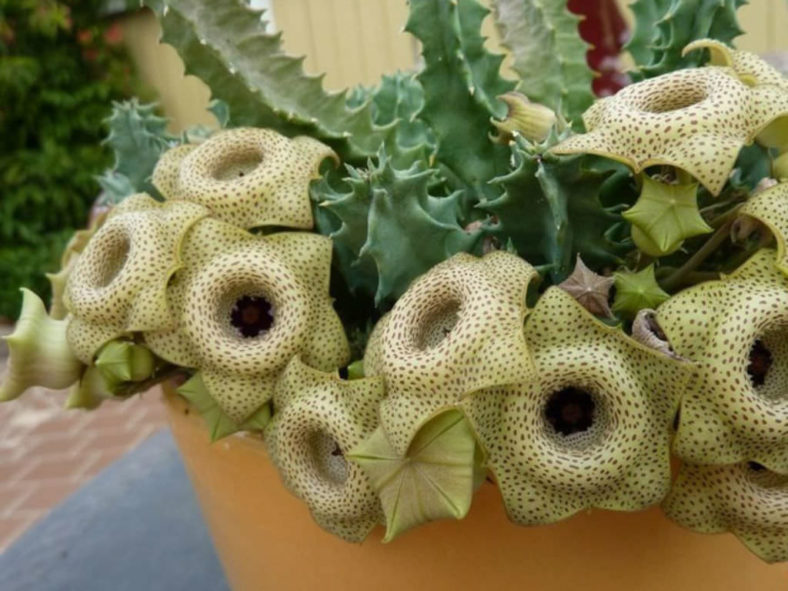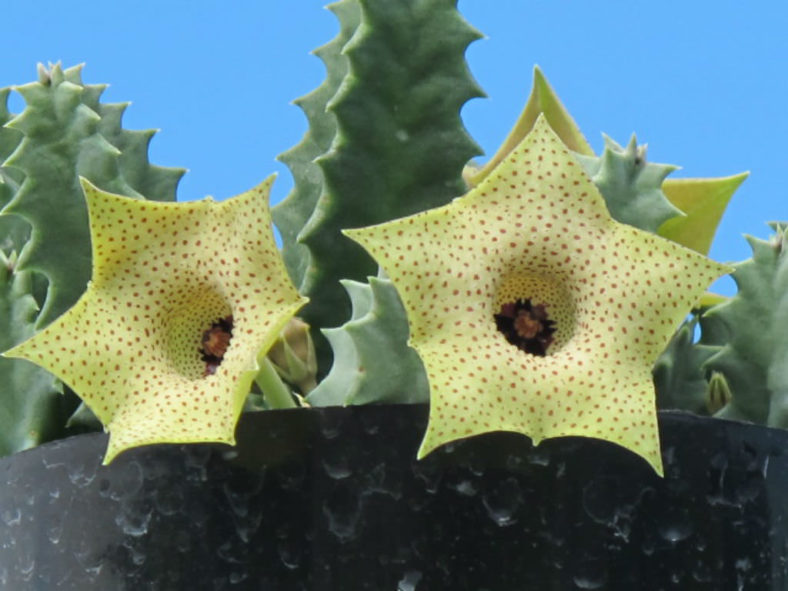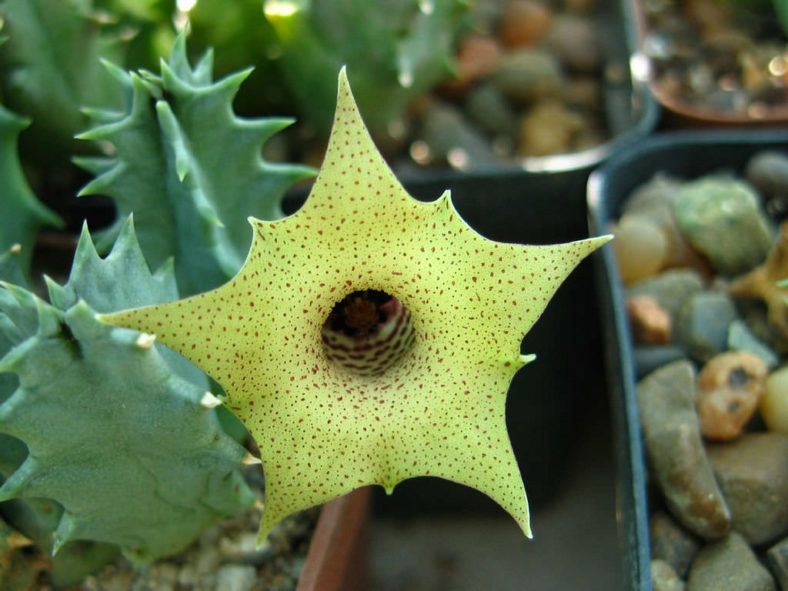Huernia brevirostris was discovered by Harry Bolus in 1867 and was sent to Kew, where it flowered in August 1875. It was described by Nicholas Edward Brown in 1877. In 2005, Peter Bruyns transferred Huernia brevirostris, along with its three subspecies, Huernia primulina and Huernia bayeri, to Huernia thuretii.
Scientific Name
Huernia brevirostris N.E.Br.
Accepted Scientific Name
Huernia thuretii J.F.Cels
Scientific Classification
Family: Apocynaceae
Subfamily: Asclepiadoideae
Tribe: Stapeliae
Genus: Huernia
Etimology
The specific epithet "brevirostris" (pronounced "brev-ih-ROS-tris") means "having a short beak" and refers to the short apices on the inner corona lobe (rostrum) of this species.
Origin
Huernia brevirostris is native to South Africa. It is not accepted as a separate species and is treated as a synonym of Huernia thuretii.
Description
Huernia brevirostris is a low-growing succulent that forms pretty large clumps of erect, glaucous green stems with small, triangular tubercles, each ending in a fleshy tooth. The stems can grow up to 3 inches (7.5 cm) long.
The flowers are cup-shaped with pale greenish-yellow to dull yellow corolla, finely spotted with red. They arise at the base of the stems and can reach a diameter of 1.2 inches (3 cm). The corona at the center of the flower is dark purple.

How to Grow and Care for Huernia brevirostris
Hardiness: USDA hardiness zones 10b to 11b: from 35°F (1.7°C) to 50°F (10°C).
Huernias require a potting mix with excellent drainage. A succulent plant mix of 50 percent pumice or perlite, 25 percent peat or organic mulch, and 25 percent sand helps prevent rotting and overwatering. Roots experience dieback in cool-season dormancy, so plants grow best in shallow containers that allow the soil to dry out quickly. Using clay pots further helps the soil from staying too wet. An underlayment of coarse gravel below the soil mix also improves drainage. In climates with damp, cool summers, a layer of gravel between the plant and the soil mix also helps prevent the stems from staying too moist.
Outdoor plantings do well in raised beds. Huernias prefer bright light or partial shade. In nature, they grow underneath shrubs or other plants. Too much sun causes stems to develop protective reddish or purple pigmentation and can actually scald the stems. Insufficient light leads to weak, thin growth and decreased flower production. These plants grow best between 50°F and 80°F (10°C and 27°C). Protect them from freezing weather.
Learn more at How to Grow and Care for Huernia.
Links
- Back to genus Huernia
- Succupedia: Browse succulents by Scientific Name, Common Name, Genus, Family, USDA Hardiness Zone, Origin, or cacti by Genus
Photo Gallery
Click on a photo to see a larger version.


